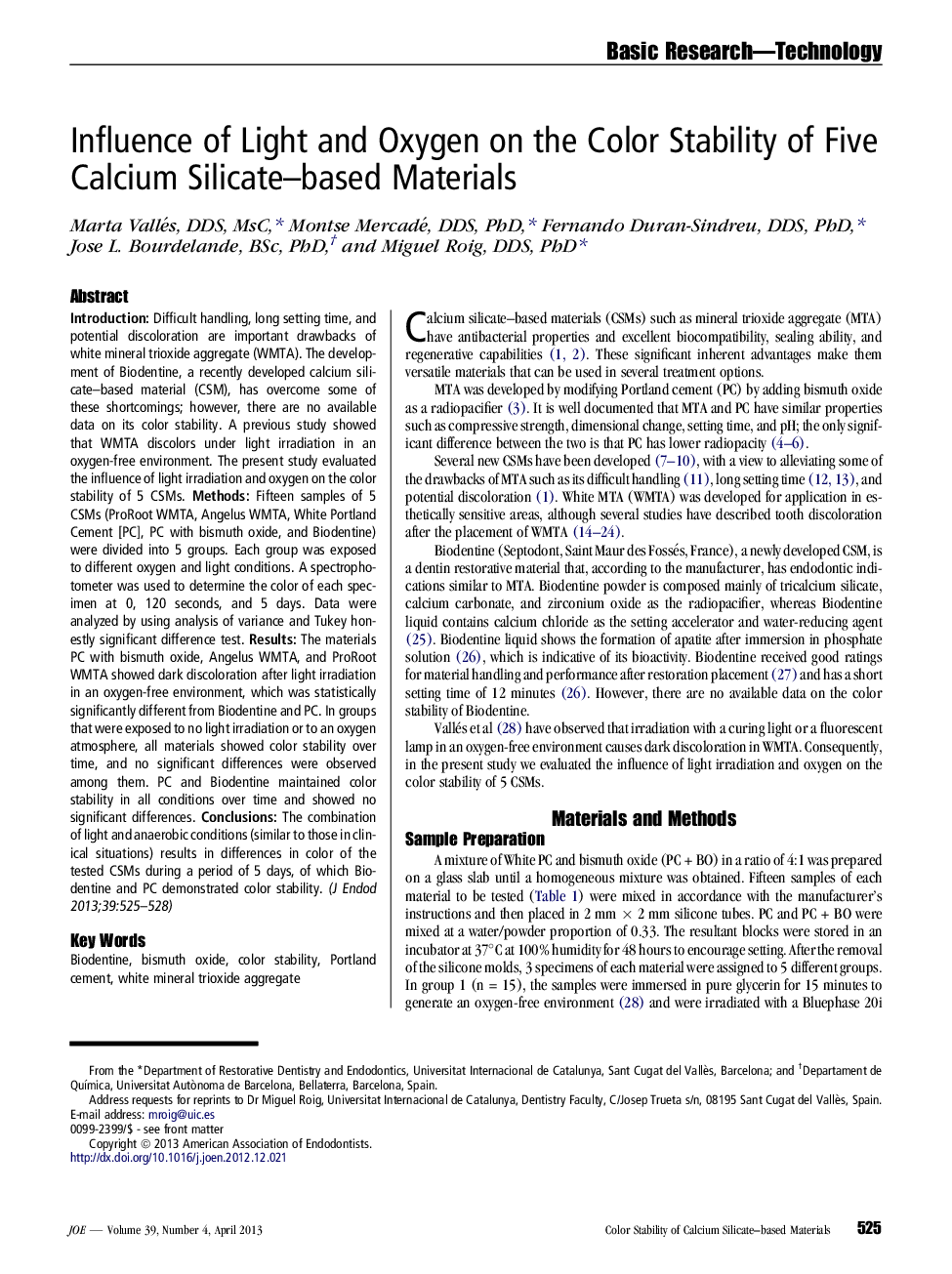| Article ID | Journal | Published Year | Pages | File Type |
|---|---|---|---|---|
| 3148352 | Journal of Endodontics | 2013 | 4 Pages |
IntroductionDifficult handling, long setting time, and potential discoloration are important drawbacks of white mineral trioxide aggregate (WMTA). The development of Biodentine, a recently developed calcium silicate–based material (CSM), has overcome some of these shortcomings; however, there are no available data on its color stability. A previous study showed that WMTA discolors under light irradiation in an oxygen-free environment. The present study evaluated the influence of light irradiation and oxygen on the color stability of 5 CSMs.MethodsFifteen samples of 5 CSMs (ProRoot WMTA, Angelus WMTA, White Portland Cement [PC], PC with bismuth oxide, and Biodentine) were divided into 5 groups. Each group was exposed to different oxygen and light conditions. A spectrophotometer was used to determine the color of each specimen at 0, 120 seconds, and 5 days. Data were analyzed by using analysis of variance and Tukey honestly significant difference test.ResultsThe materials PC with bismuth oxide, Angelus WMTA, and ProRoot WMTA showed dark discoloration after light irradiation in an oxygen-free environment, which was statistically significantly different from Biodentine and PC. In groups that were exposed to no light irradiation or to an oxygen atmosphere, all materials showed color stability over time, and no significant differences were observed among them. PC and Biodentine maintained color stability in all conditions over time and showed no significant differences.ConclusionsThe combination of light and anaerobic conditions (similar to those in clinical situations) results in differences in color of the tested CSMs during a period of 5 days, of which Biodentine and PC demonstrated color stability.
